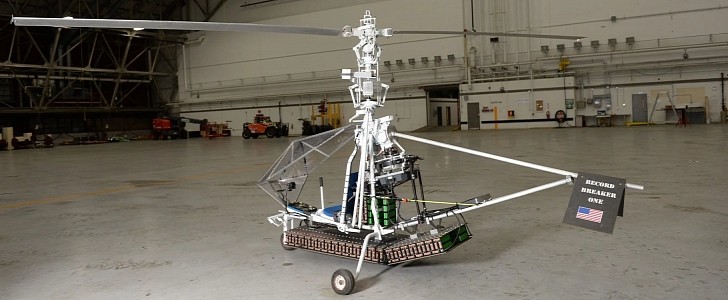Small aircraft are the next big thing in the aviation sector, and VTOLs, be they propelled by electric power, hydrogen, or a hybrid system, have become a long-term priority not only for startups across the world but also for industry giants who have noticed the potential of this new concept.
Companies investing in VTOLs are currently focusing on multiple fronts, but one particular area that has received lots of refinements lately is the battery system on models powered by electric motors.
In other words, some eVTOL companies are working around the clock on improving the range without adding too much weight, but as far as Luminati is concerned, the entire industry should pay much more attention to another potentially fatal detail.
As a company that invests in the creation of VTOLs, electric helicopters, and drones, Luminati warns that the existing battery design used on unnamed aircraft is extremely dangerous and could have a catastrophic impact in some scenarios, such as flying taxis.
Daniel Preston, CEO of Luminati, has recently warned that “automotive battery technology is completely unsuitable for aerospace,” as lithium-ion and lithium-polymer packs come with an increased likelihood of fire when getting very hot. “These are not just worse than petroleum, they are monumentally worse than petroleum,” Preston noted.
Lithium-ion batteries have indeed shown their limits not only in the car industry but also in the tech sector where overheating has proved to be the Achilles’ heel when used on smartphones. Back in 2016, Samsung was forced to retire a full lineup of phones after discovering the devices came with faulty li-ion battery packs that could have experienced a fire under severe overheating.
Preston says the way to go isn’t necessarily finding new ways to prevent the fire but a more effective method to deal with it should it still occur.
So Luminati has come up with a new battery design that uses gas channels integrated right into the battery pack and which essentially directs the fire away from the aircraft. In other words, should a fire occur, the flames are not kept inside the battery pack but pushed outside where the likelihood of major damages is much lower, giving the aircraft enough time to land safely.
Furthermore, the company’s new battery pack design is also much lighter, simply because it no longer requires any protective case. For comparison, a 4,000-cell battery pack can have its weight reduced from 1,200 pounds (545 kg) to no less than 400 pounds (180 kg) should this proposed design be used, the Luminati CEO says.
At the end of the day, every battery design has its weaknesses, and this is why investing in monitoring capabilities is also critical for the future of eVTOL. For now, however, no solution has proved to be 100% efficient.
In other words, some eVTOL companies are working around the clock on improving the range without adding too much weight, but as far as Luminati is concerned, the entire industry should pay much more attention to another potentially fatal detail.
As a company that invests in the creation of VTOLs, electric helicopters, and drones, Luminati warns that the existing battery design used on unnamed aircraft is extremely dangerous and could have a catastrophic impact in some scenarios, such as flying taxis.
Daniel Preston, CEO of Luminati, has recently warned that “automotive battery technology is completely unsuitable for aerospace,” as lithium-ion and lithium-polymer packs come with an increased likelihood of fire when getting very hot. “These are not just worse than petroleum, they are monumentally worse than petroleum,” Preston noted.
Lithium-ion batteries have indeed shown their limits not only in the car industry but also in the tech sector where overheating has proved to be the Achilles’ heel when used on smartphones. Back in 2016, Samsung was forced to retire a full lineup of phones after discovering the devices came with faulty li-ion battery packs that could have experienced a fire under severe overheating.
Preston says the way to go isn’t necessarily finding new ways to prevent the fire but a more effective method to deal with it should it still occur.
So Luminati has come up with a new battery design that uses gas channels integrated right into the battery pack and which essentially directs the fire away from the aircraft. In other words, should a fire occur, the flames are not kept inside the battery pack but pushed outside where the likelihood of major damages is much lower, giving the aircraft enough time to land safely.
Furthermore, the company’s new battery pack design is also much lighter, simply because it no longer requires any protective case. For comparison, a 4,000-cell battery pack can have its weight reduced from 1,200 pounds (545 kg) to no less than 400 pounds (180 kg) should this proposed design be used, the Luminati CEO says.
At the end of the day, every battery design has its weaknesses, and this is why investing in monitoring capabilities is also critical for the future of eVTOL. For now, however, no solution has proved to be 100% efficient.















